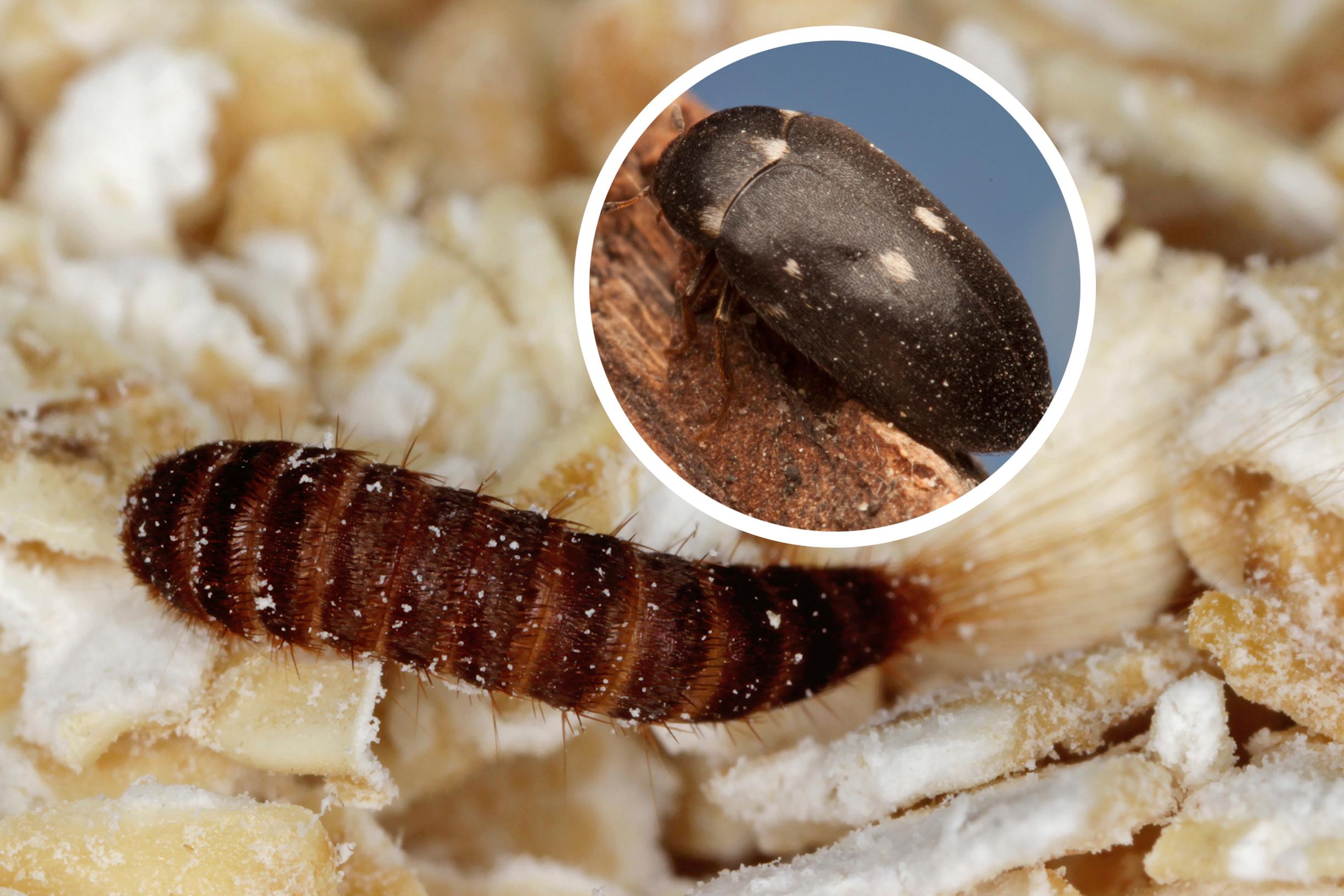
The carpet beetle is an unwelcome guest that chews holes in clothing—here’s how to get rid of this persistent pest
The carpet beetle can easily enter your home through secondhand items. This pest lays eggs in small crevices, and once they hatch, the larvae damage textiles by chewing tiny holes. Check out these tips for controlling carpet beetles!
Carpet beetles are (typically) brown or black beetles that feed on materials such as wool, furs, and other textiles. Attagenus woodroffei and Attagenus pellio are the most common species in Northern Europe.
Identifying the carpet beetle
Attagenus woodroffei
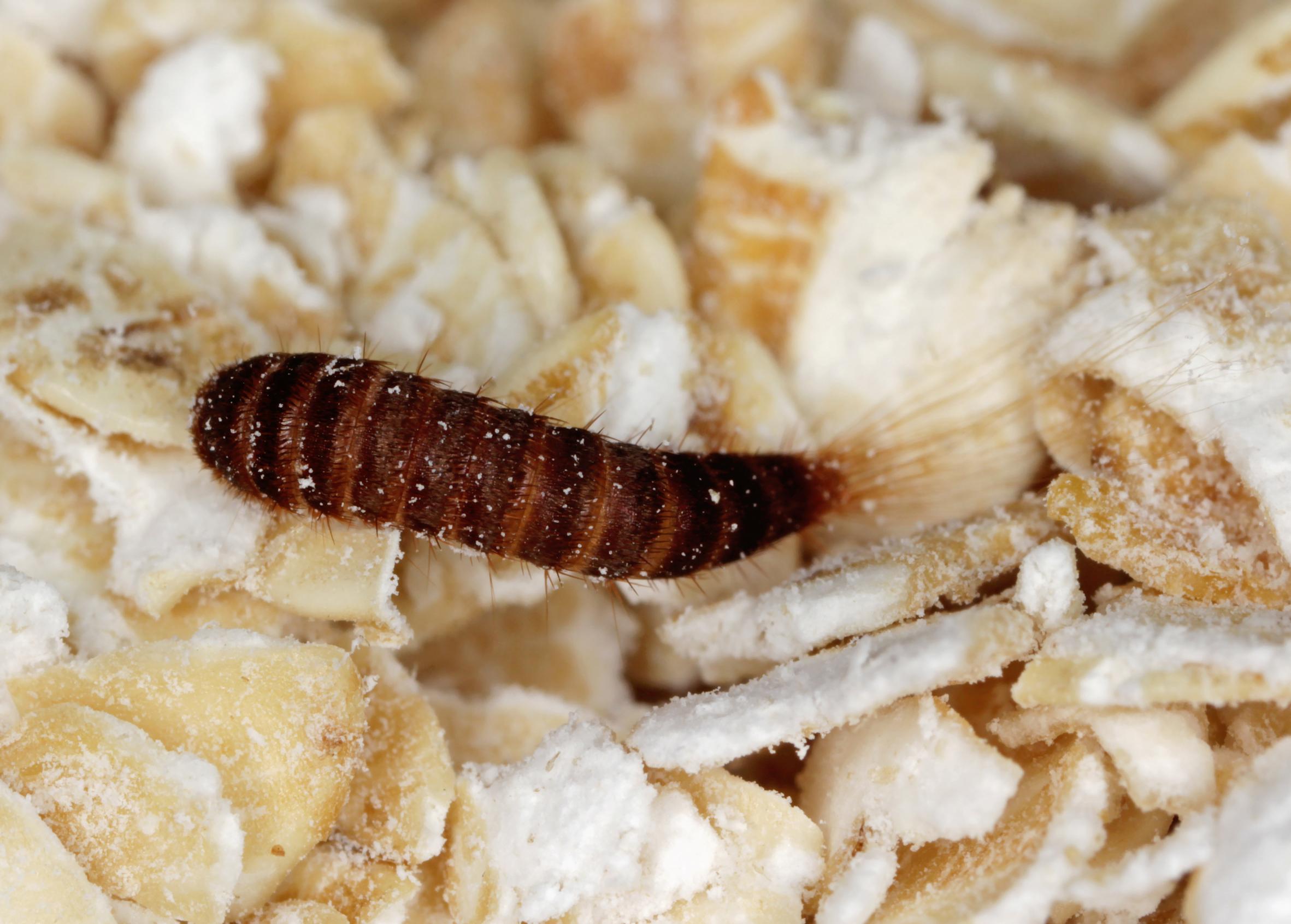
Attagenus woodroffei larva grows to around 10–11 millimeters in length. Its segments are dark brown, while the hind portion is lighter, giving it a striped appearance. The larva tapers toward the rear and has a clearly segmented tuft at the end.
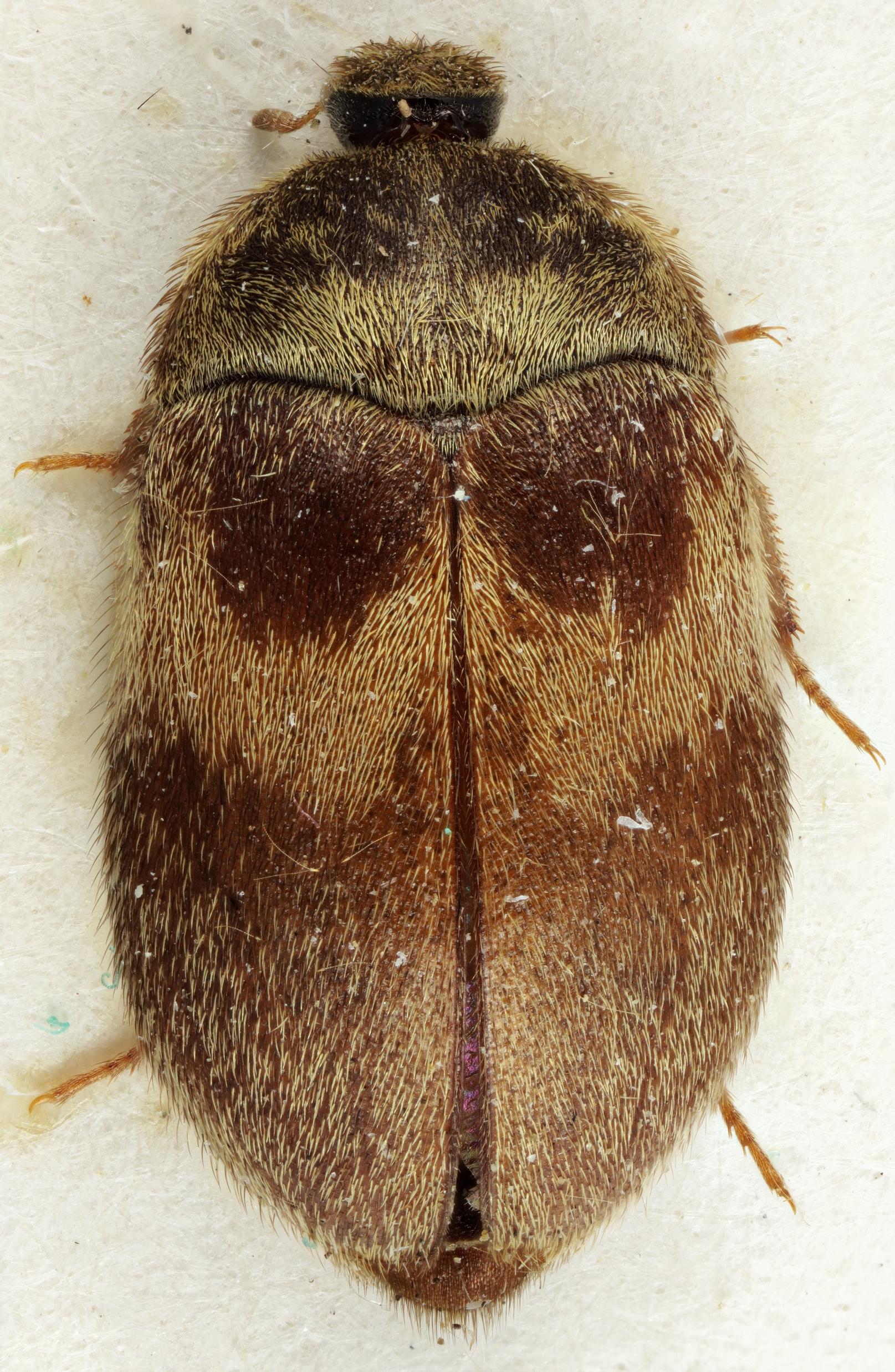
An adult Attagenus woodroffei is 4–6 millimeters long, somewhat round, and dark brown with fine hairs. There is a wavy, yellowish band on its back. Its antennae are short and thicken toward the tip.
Attagenus pellio
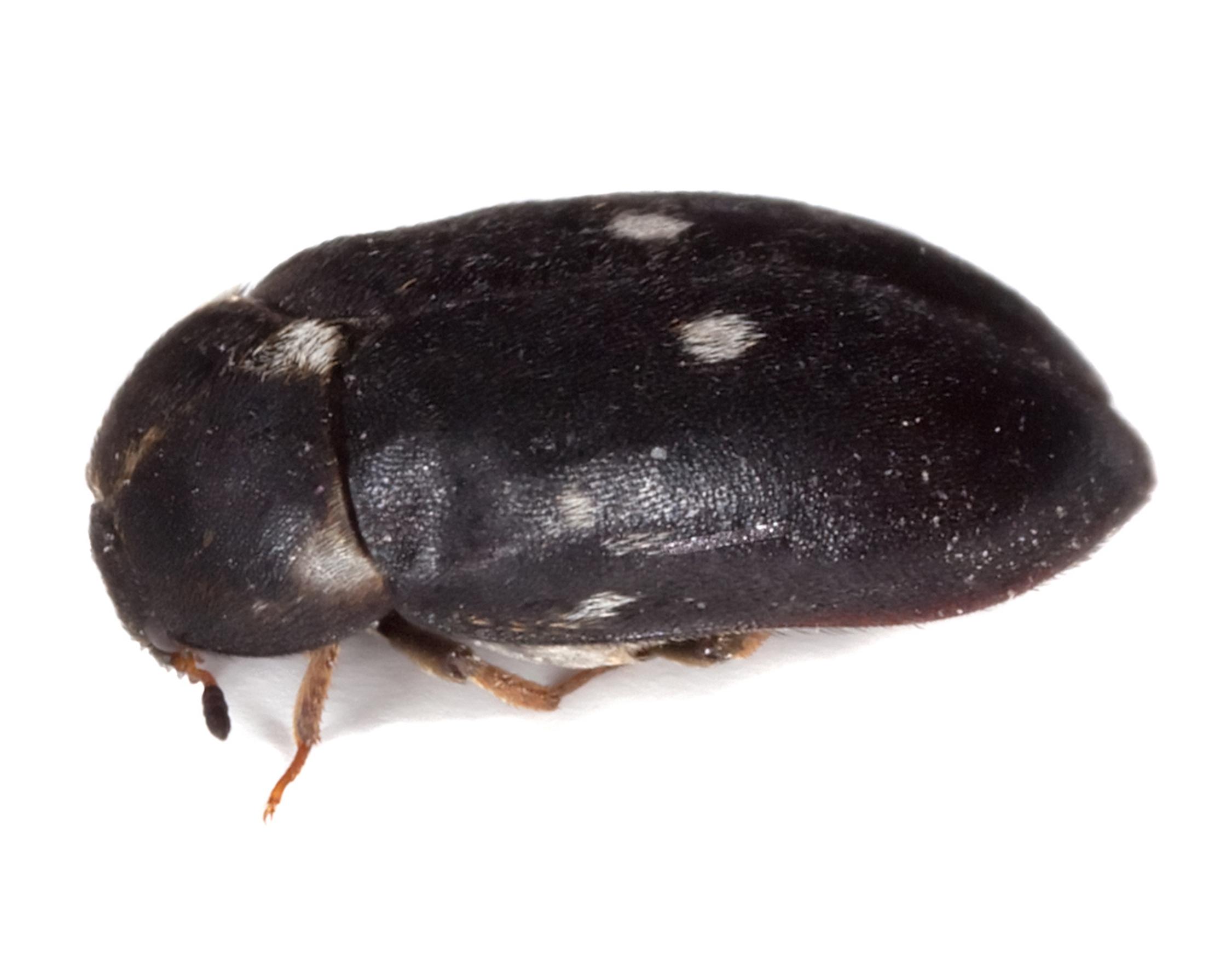
Attagenus pellio is black and has three light spots on its back: two on the wing covers and one on the pronotum. It is about the same size as Attagenus woodroffei.
The larva of Attagenus pellio is yellowish and covered in dense hair. It tapers at the back and has a long tuft at the tip of its abdomen.
Where do carpet beetles come from?
Carpet beetles can get indoors in various ways, which makes fully preventing them challenging.
Adult carpet beetles can fly and they can easily enter through open windows and doors, especially in warmer weather. Because they can move from room to room, they are harder to control. Outdoor pets like dogs and cats may also bring carpet beetles inside.
Carpet beetles can also spread from used furniture, clothing, rugs, or other textiles. Items made of wool or fur can contain their eggs or larvae.
They are often found in attics, basements, or inside building structures. In apartment buildings, they can spread from one unit to another through pipes, vents, and other openings.
Where do carpet beetles lay eggs?
Carpet beetle eggs usually go unnoticed because they are laid in hidden areas close to a food source. Attagenus woodroffei lay eggs in warm, dark spots, like behind baseboards or inside closets. Attagenus pellio may lay eggs in bird nests, and the larvae can then move indoors for overwintering.
What do carpet beetles eat and do they bite humans?
Neither adult carpet beetles nor their larvae bite humans. The adult does not require food and mainly focuses on reproducing.
The larvae, however, are active feeders that cause the real damage. They consume natural or animal-derived materials such as wool, silk, fur, cotton, and linen. Carpet beetles also eat dead insects and textile dust. The small, sharply defined holes they create can appear in clothing, rugs, and other household textiles.
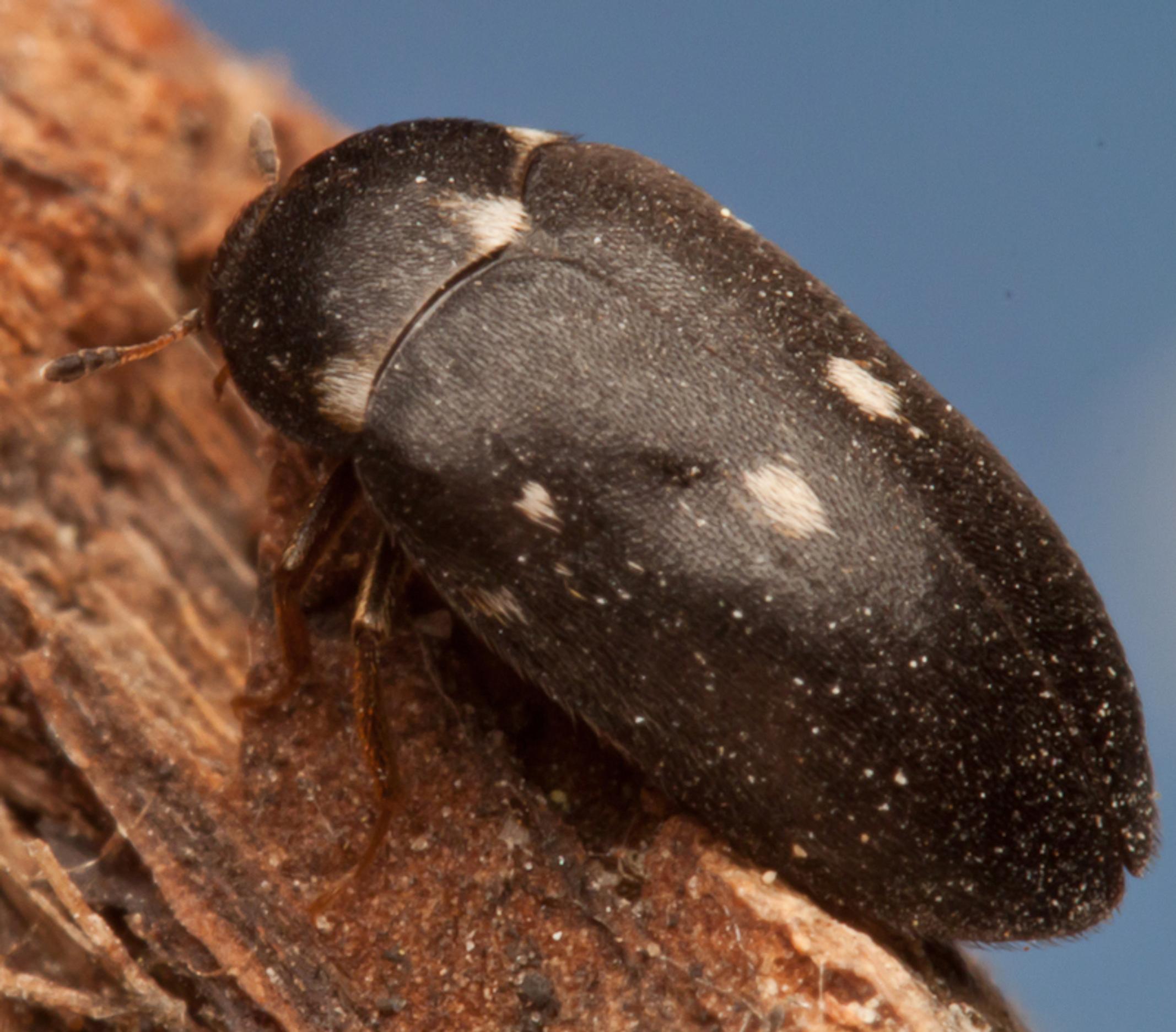
How can you control carpet beetles?
1. Keep your home clean
Carpet beetles can appear in any home, but keeping things tidy helps. Clean and vacuum often, as larvae thrive in rugs and dust.
2. Don’t store unwashed textiles in closets
Pay close attention to how you store clothes and textiles. Avoid putting dirty laundry in closets, and keep closets, shelves, and drawers clean. Store rarely used wool garments and other natural-fiber textiles in tightly sealed plastic bags or storage boxes.
3. Examine secondhand purchases
Check used furniture and clothing when you buy them or bring them home. Inspect items visually and brush or air them out. Before use, try washing textiles at least at 60 °C if the material allows. Freezing them in a sealed plastic bag—at around –20 °C for two or three days—usually kills beetles and larvae. If you suspect pests, you can also treat textiles with insecticide.
4. Seal gaps and clean attics
Try to keep carpet beetles out by sealing cracks around windows and doors. Remove any organic material in attics or building structures—such as animal remains or old bird nests—these can feed larvae.
What if you already have carpet beetles at home? Here’s how to stop them from spreading
If you see holes in textiles, empty larval skins, or other signs of carpet beetles, act immediately:
- Check and empty all textile storage spots. Clean them thoroughly. Vacuum floors, rugs, baseboards, closet interiors, and hard-to-reach corners. Replace the vacuum bag right away and throw it out immediately.
- If needed, use an insecticide spray around baseboards, vents, or other potential hiding spots. Read the instructions carefully and ensure the product is safe for indoor use.
- Wash infested clothing and textiles at a minimum of 60 °C or freeze them for two to three days.
- In apartment buildings, carpet beetles spread quickly between units. If there have been reported cases in your building, consider using an insecticidal aerosol on shelves and drawers, and cover them with shelf paper.
- If DIY methods fail or the infestation is extensive, call in professional pest control.
Expert: Environmental Inspector Hanna Vatanen, City of Helsinki Environmental Services


